Echinacea, or the coneflower, contain bright flowery heads that you appreciate in the summer bloom. If you are coming to the end of one of these outstanding blooming seasons, you might be wondering how to protect these beauties in the upcoming winter months. Well, you are in the right place. We did the research to provide you with the best overwintering tips to protect your Echinacea this season.
Echinaceas are hardy perennials that go dormant during the worst of the cold. To ensure your coneflowers will come to life again come spring, you must cut back your flowers and keep up with watering in overly dry winters.
Cutting back your Echinaceas and watering (only sometimes) seems easy, right? Keep reading as we tell the best time to cut back your Coneflowers and how to care for your plants that are in pots.

Overwintering Your Echinacea
Echinaceas are hardy flowers. They are labeled as winter hardy for growing zones 3-9. This member of the daisy family can survive being covered in snow and the lowest temperatures in these zones. Echinacea is resilient, but there are some precautions you can take to set them up for success in their next season. Cutting back and watering as needed is part of the Winter care for coneflowers. Let's take a closer look at these recommendations and a couple more.
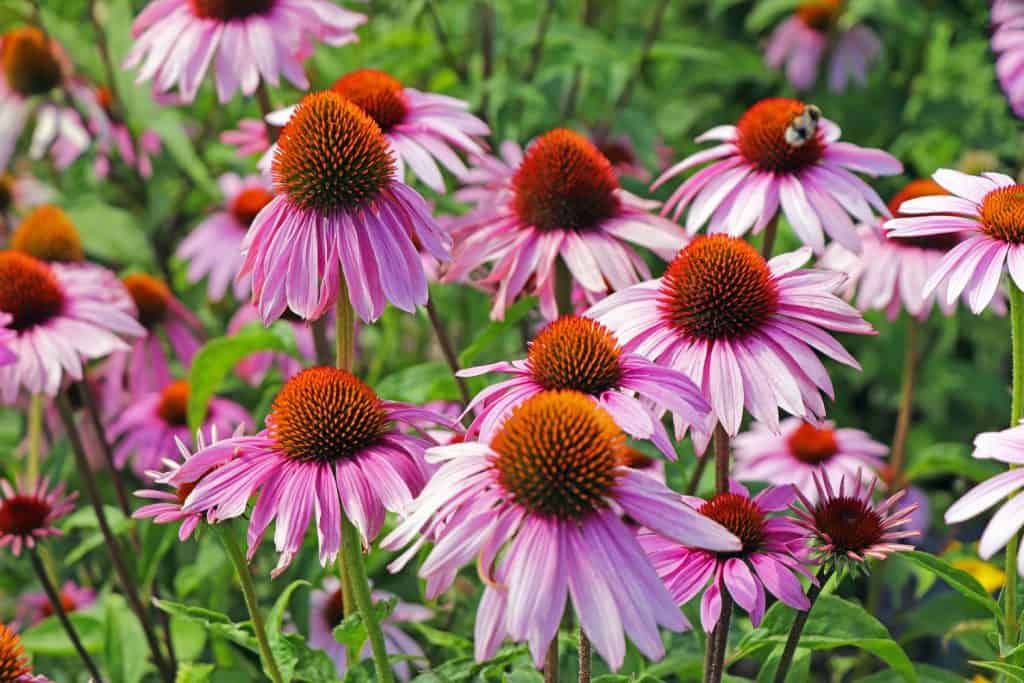
When Should You Cut Back Echinacea?
Cutting back these flowers is the major part of their winter care. The timing that this process is completed varies and has different benefits. You can cut back your flowers in late fall. Clipping them 3-6 inches from the ground allows your Echinacea to put all its energy into the roots over the winter and extending their blooming period in summer.
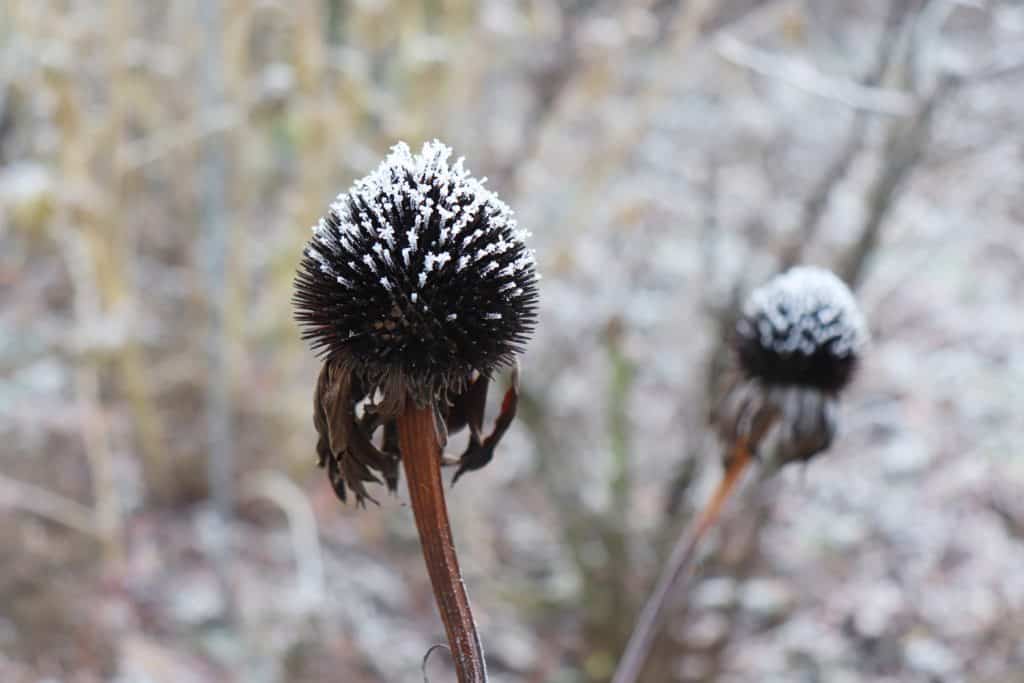
Some gardeners don't cut back their Echinacea until early spring, allowing the seed heads to remain in place. This is beneficial to any local or passing birds, as they use these seeds as a primary source of nutrition over the winter. Your coneflowers will still bloom in summer but won't have as along as a blooming period compared to Echinacea cut back in fall.
Is this the first year for your Echinacea? During the first year, your flower may benefit from cutting off all flowers before they bloom. Seems counterintuitive right? By cutting off these blooms, you are giving more energy for the roots to establish and spread during this first year of life. Cutting the blooms off now opens up for larger flowers next year with a longer blooming period.
The video below highlights additional points on when to cut back your Echinacea.
Should You Cover Echinacea For Winter?
In most cases, Cone Flowers do not need to be covered for winter. But in what case should you cover these flowers?
You should cover your Echinacea if you live in a colder growing zone compared to zones 3-9. If you are within the ideal growing zones, but your flowers are in an exposed part of the garden, subjected to high winds and full sun, this is a good reason to use covers.
You can find a 4-pack of reusable plant covers here on Amazon.
When Should You Water Echinacea In Winter?
Alongside the hardiness of Echinacea, they are also drought tolerant. Watering in winter is only necessary for your Echinacea in the ground if the season is unusually dry and warm.
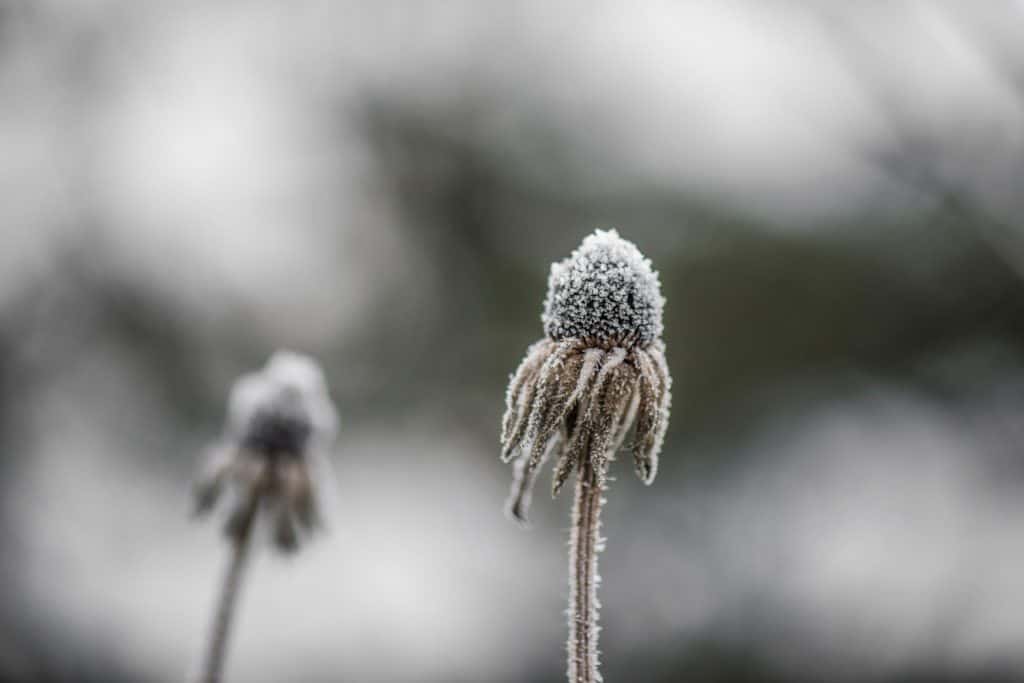
If you have potted coneflowers, these plants will need a light water every other week through the winter months. You want to avoid over-watering. Only water if the top few inches of soil in your pots or planters is dry.

Watering when needed is important, but watching out for overwatering or drowning Echinacea is equally important. Snow on your coneflowers is not usually a concern unless this means your Echinacea will get water logged when the snow melts. To avoid this, ensure your soil and the area around your plants have adequate drainage.
Disease Management
Are you working with potted Echinacea? If you have potted flowers or are planning to transplant your Echinacea into pots, it is a good idea to get on top of disease management. One thing to worry about with potted Echinacea is the fungus, Botrytis. You can add fungicide to your pots before your coneflowers go dormant.
Amazon offers a ready-to-use fungicide spray here.
This process will prevent fungus from taking over and will protect your plant as it moves into dormancy for the winter. Disease management goes along with monitoring water as well. You should water if you see your plant's soil is dry, but over-watering can increase the chances of a fungal takeover. Disease management for flowers is a balance between keeping environments moist and dry enough and catching any pests as early as possible.
Can Echinacea Withstand Winter?
Echinacea is native to the east half of North America. This flower is hardy for a wide range of growing zones, so, yes, Echinacea can withstand winter. They can survive pretty rough winters at that. How do they do it?
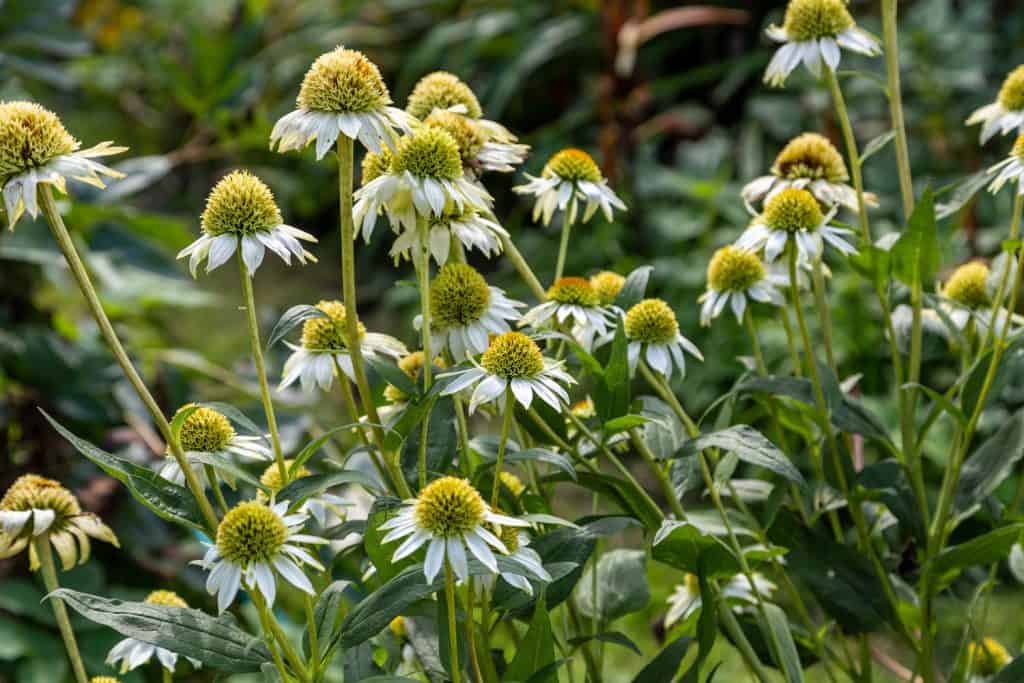
Coneflowers have tap roots that store food for winter. When this flower is not blooming, it is spending its energy expanding its root system. It will appear that your Echinacea has died above ground when it begins to get cold, but don't worry. This plant just enters a dormant state, allowing more energy to be used by the roots.
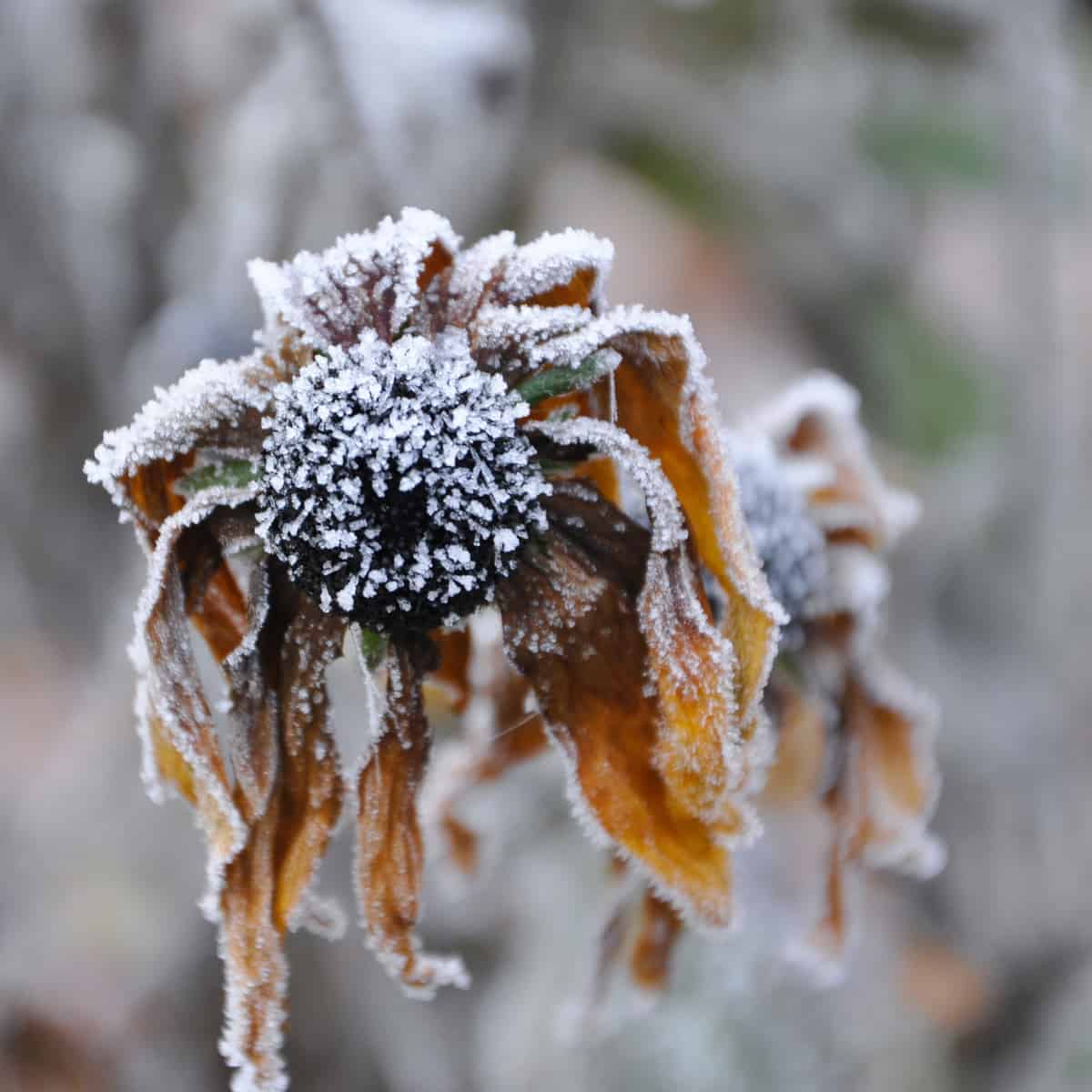
Your Echinacea will withstand winter, and it will seed all over. You will find an abundance of new seedlings popping up in your garden. Over time, it may be hard to distinguish which was your originally planted Echinacea.
Read more in this post: Can Echeveria Survive Winter Outside?
Is It Too Late To Plant Echinacea?
Your colorful coneflowers come in a range of flower forms and can reach up to 5 feet tall. You do need to plant them at specific times to ensure these beauties come back next season. When is it too late to get these flowers in the ground?
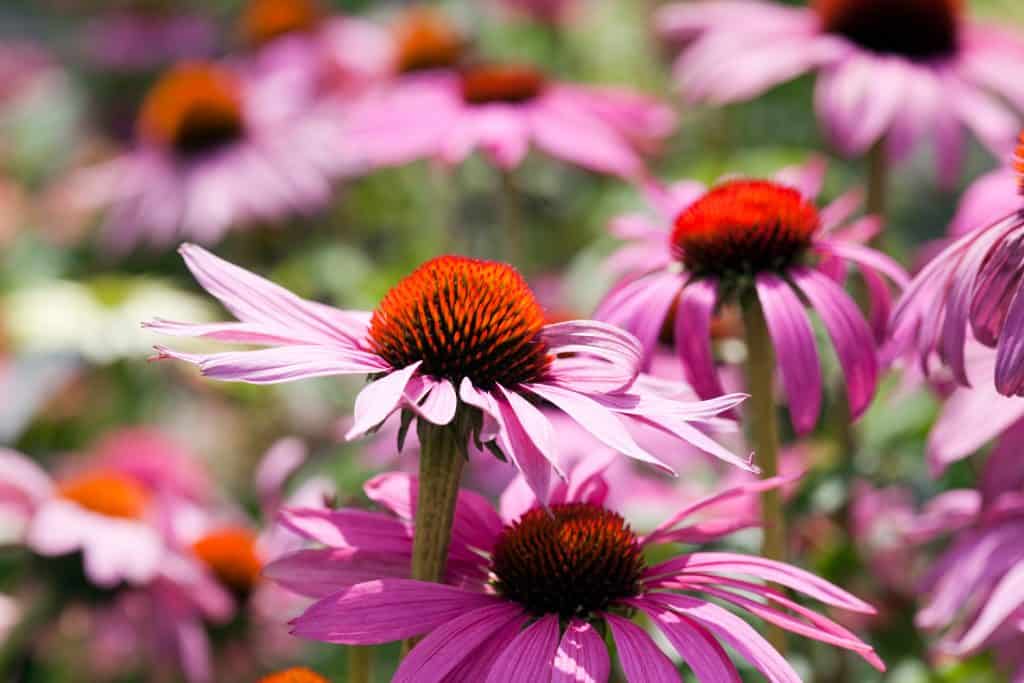
Depending on the zone you are planting in, coneflowers should be planted in either spring or fall. When planting in fall, there needs to be at least six weeks before the first frost. These weeks give your coneflower enough time to establish their roots. If a frost comes too early, your Echinacea may not come back again in Summer.
Maybe you are unsure if there is enough time this fall. To be safe, plan to plant your Echinacea is spring, when all danger of frost has passed. Whenever you decide to plant, ensure your flowers get plenty of sunlight and get placed in soil with adequate drainage.
Read more in this blog post: When To Plant Perennials [By Zone And State]
Does Echinacea Come Back Every Year?
Echinacea is labeled as a perennial plant. This definition means the plant will live more than two years and their blooming period is reoccurring. Your coneflowers will come back every year pending no other issues. Other issues factor in pest infestations, root rot and other diseases that affect your garden's health.
Keep in mind that every plant has an expected lifespan. In the wild, Echinacea can live up to 40 years. In your garden, expect your plant to live up to 4 years. Remember, your original plant will drop seeds every year. Even when the original has died, new seedlings are most likely present to keep blooming. You can collect seed heads in the fall and store them until next season to plant as well.
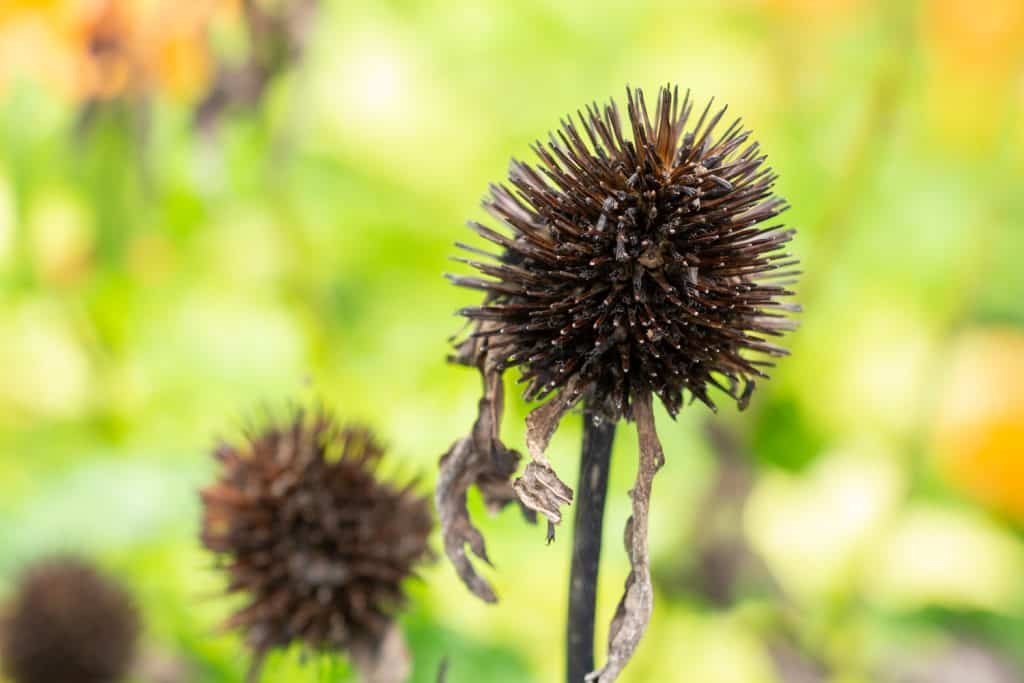
If you want to control the spread of your Echinacea or simply don't want any more seedlings popping up, the best action to take is deadheading any spent flowers. Deadheading prevents any reseeding and keeping up with this process during bloom periods, keeps your plant looking full and pretty.
Read more in this post: 15 Short Perennials That Bloom All Summer
Concluding Thoughts
There are just a handful of recommendations for overwintering your Echinacea. Luckily, these plants are hardy as is and can typically survive winter on their own. These tips are suggestions to increase hardiness and promote even more growth come next season.
Echinacea is a highlight to any garden and tends to keep giving once you plant your first flower. We hope you found this article helpful when it comes to caring for your coneflowers and inspired you to add some winter care into your garden routine. Happy gardening!
Have more plants to overwinter? Learn more in this blog post: How To Properly Overwinter Ferns [Inc. Potted]


